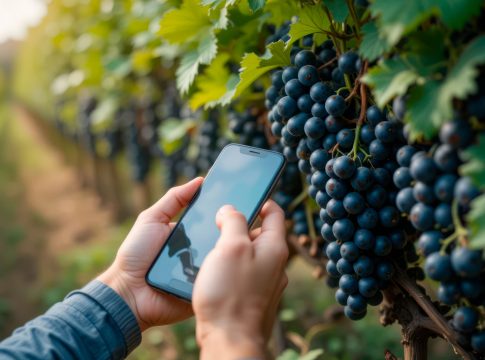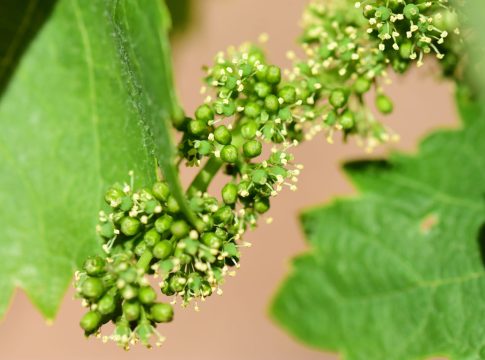
A livello globale, la scarsità d'acqua è il principale limite alla produzione agricola, fatto questo che potrebbe essere accentuato dai cambiamenti climatici (Intergovernmental Panel on Climate Change, IPCC - 2013). D'altro canto, la siccità, la salinità, le temperature estreme e i suoli acidi limitano in modo significativo la distribuzione della vite in tutto il mondo. Questi stress riducono in generale la produttività e solo il deficit idrico controllato è stato utilizzato in modo positivo per migliorare le caratteristiche qualitative dell’uva. In parte, questo effetto è determinato dalla ridotta vigoria dei germogli e dalla competizione per le risorse di carbonio (cambiamento del rapporto sink/source). Gli stress, e generalmente le alterazioni del sistema radicale, possono dare inizio a una serie programmata di regolazioni che non si limita al suolo. Lo stress idrico per esempio induce...
LEGGI L'ARTICOLO COMPLETO A FIRMA DI MAURIZIO BOSELLI
PER APPROFONDIRE
(Approfondimenti a cura dell'Autore)
Bibliografia
Bahouaoui M.A., Sartor E., Rovetta E., Tornielli G.B., Boselli M., Ferrara G., 2010. Adjustement of water use efficiency by stomatal regulation during drought and recovery of Verona province grape varieties grafted on two different Vitis hybrid rootstocks. Proc. VIII Intern. Terroir Congress Soave. Vol. II-7: 88-95. Baron K.N., Schroeder D.F., Stasolla C., 2012. Transcriptional response of abscisic acid (ABA) metabolism and transport to cold and heat stress applied at the reproductive stage of development in Arabidopsis thaliana. Plant Science, 188-189: 48-59. Chaves M.M., Santos T., Souza, C.R., Ortuño M.F., Rodrigues M.L., Lopes C., Maroco J., Pereira J.S., 2007. Deficit irrigation in grapevine improves water-use efficiency while controlling vigour and production quality. Ann. Appl. Biol. 150: 237–252. Chaves M.M., Zarrouk O., Francisco R., Costa J.M., Santos T., Regalado A.P., Rodrigues M.L., Lopes C.M., 2010. Grapevine under deficit irrigation: hints from physiological and molecular data. Annals of Botany, 105: 661-667. Collins R., Kristensen P., Thyssen N., 2009. Water Resources Across Europe—Confronting Water Scarcity and Drought. European Environment Agency, Copenhagen, 57 pp. Collins M.J., Loveys B.R., 2010. Characterising water-use strategies of major winegrape varieties grown in Australia. Australian J. Grape Wine Res., 16s1, p. A14. Collins M.J., Fuentes S., Barlow E.W.R., 2010. Partial rootzone drying and deficit irrigation increase stomata sensitivity to vapour pressure deficit in anisohydric grapevines. Funct. Plant Biol., 37: 128-138. EEA Report, 2009. Water resources across Europe — confronting water scarcity and drought. European Environment Agency, N. 2, ISSN 1725-9177. Flexas J., Galmés J., Gallé A., Gulias J., Pou A., Ribas-Carbo M., Tomàs M., Medrano H., 2010. Improving water use efficiency in grapevines: potential physiologicaltargets for biotechnological improvement. Aust. J. Grape Wine Res., 16: 106–121. Gil M., Bottini R., Berli F., Pontin M., Silva M.F., Piccoli P., 2013. Volatile organic compounds characterized from grapevine (Vitis vinifera L. cv. Malbec) berries increase at pre-harvest and in response to UV-B radiation. Phytochemistry, 96 :148-57. IPCC, 2013. Working Group I. Contribution to the IPCC Fifth assessment report (AR5), Climate Change: the physical science basis. IPCC Secretariat, Geneva (CH). Hubbard K.E., Siegel R.S., Valerio G., Brandt B., Schroeder J.I., 2012. Abscisic acid and CO2signalling via calcium sensitivity priming in guard cells, new CDPK mutant phenotypes and a method for improved resolution of stomatal stimulus – response analyses. Annals of Botany, 109: 5–17. Ortuño M.F., Conejero W., Moreno F., Moriana A., Intrigliolo D.S., Biel C., Mellisho C.D., Pérez-Pastor A., Domingo R., M.C. Ruiz-Sánchez M.C., Casadesus J., Bonany J., Torrecillas A., 2010. Could trunk diameter sensors be used in woody crops for irrigation scheduling? A review of current knowledge and future perspectives. Agric. Water Management, 97: 1–11. Pou A., Medrano H., Tomàs M., Martorell S., Ribas-Carbó M., Flexas J., 2012. Anisohydric behaviour in grapevines results in better performance under moderate water stress and recovery than isohydric behavior. Plant Soil, 359: 335-349. Schultz H.R., 2003. Differences in hydraulic architecture account for near-isohydric and anisohydric behaviour of two field-grown Vitis vinifera L. cultivars during drought. Plant Cell Environ., 26 :1393–1405. Soar C.J., Speirs J., Maffei S.M., Penrose A.B., McCarthy M.G., Loveys B.R., 2006. Grapevine varieties Shiraz and Grenache differ in their stomatal response to VPD: apparent links with ABA physiology and gene expression in leaf tissue. Australian J. Grape Wine Res., 12: 2-12. Tomás M., Medrano H., Pou A., Escalona J.M., Martorell S., Ribas-Carbó M., Flexas J., 2012. Water use efficiency in grapevine cultivars grown under controlled conditions: effects of water stress at the leaf and whole plant level. Aust. J. Grape Wine Res., 18: 164–172. Tomás M., Medrano H., Escalona J.M., Martorella S., Pou A., Ribas-Carbó M., Flexas J., 2013. Variability of water use efficiency in grapevines. Environ. Exp. Bot., http://dx.doi.org/10.1016/j.envexpbot.2013.09.003.











